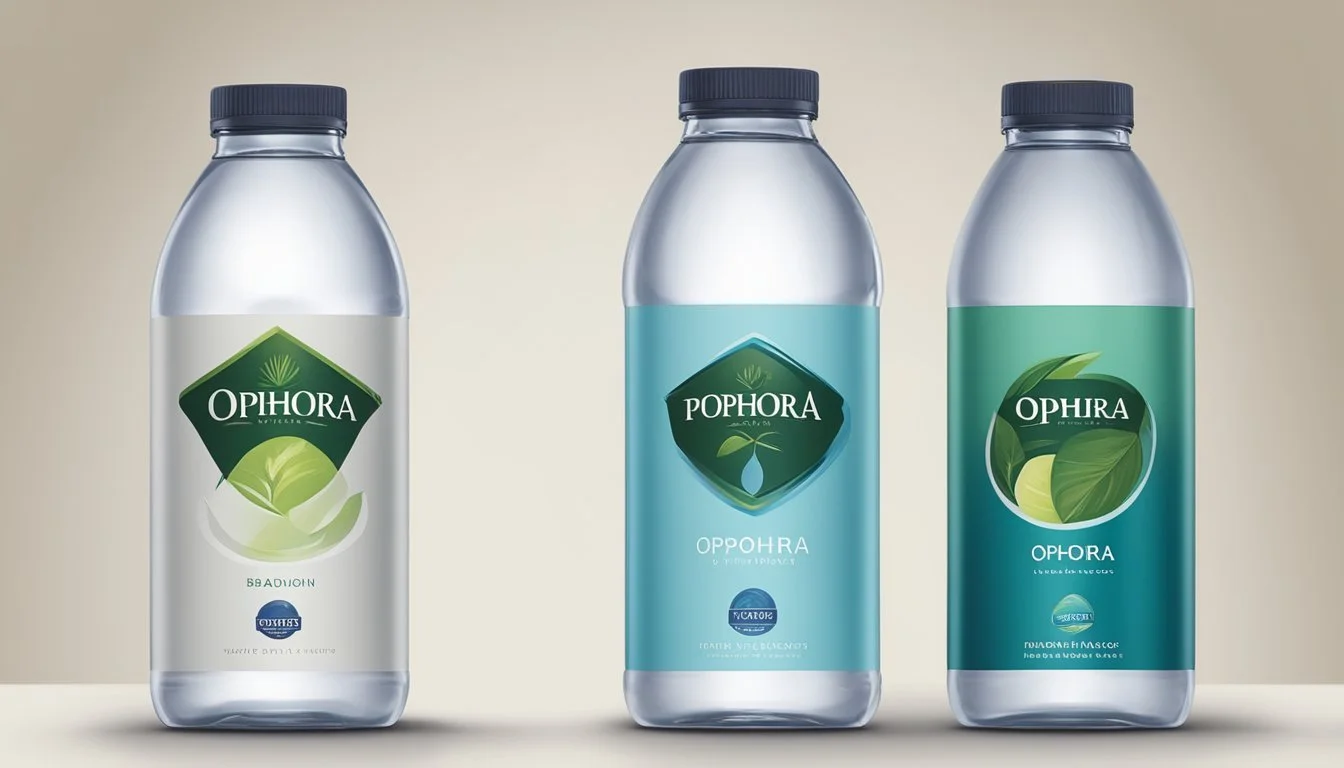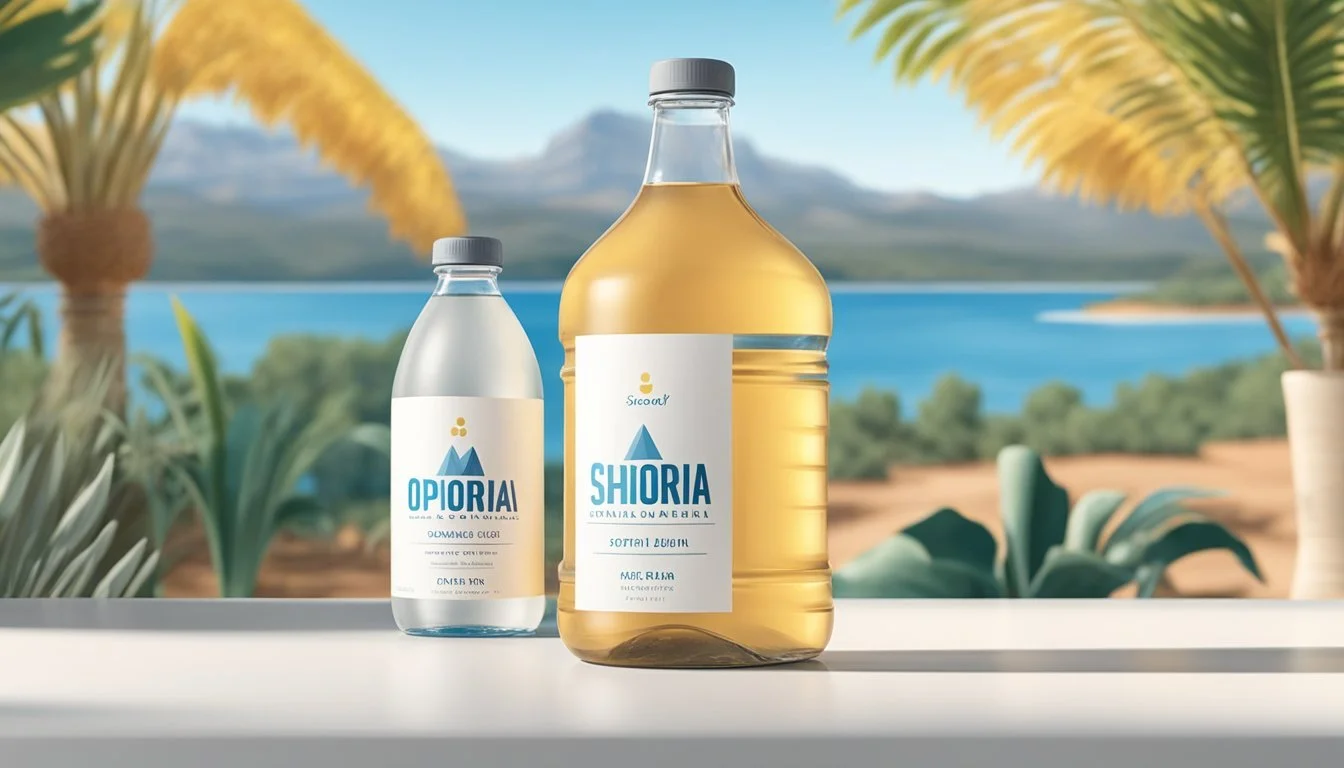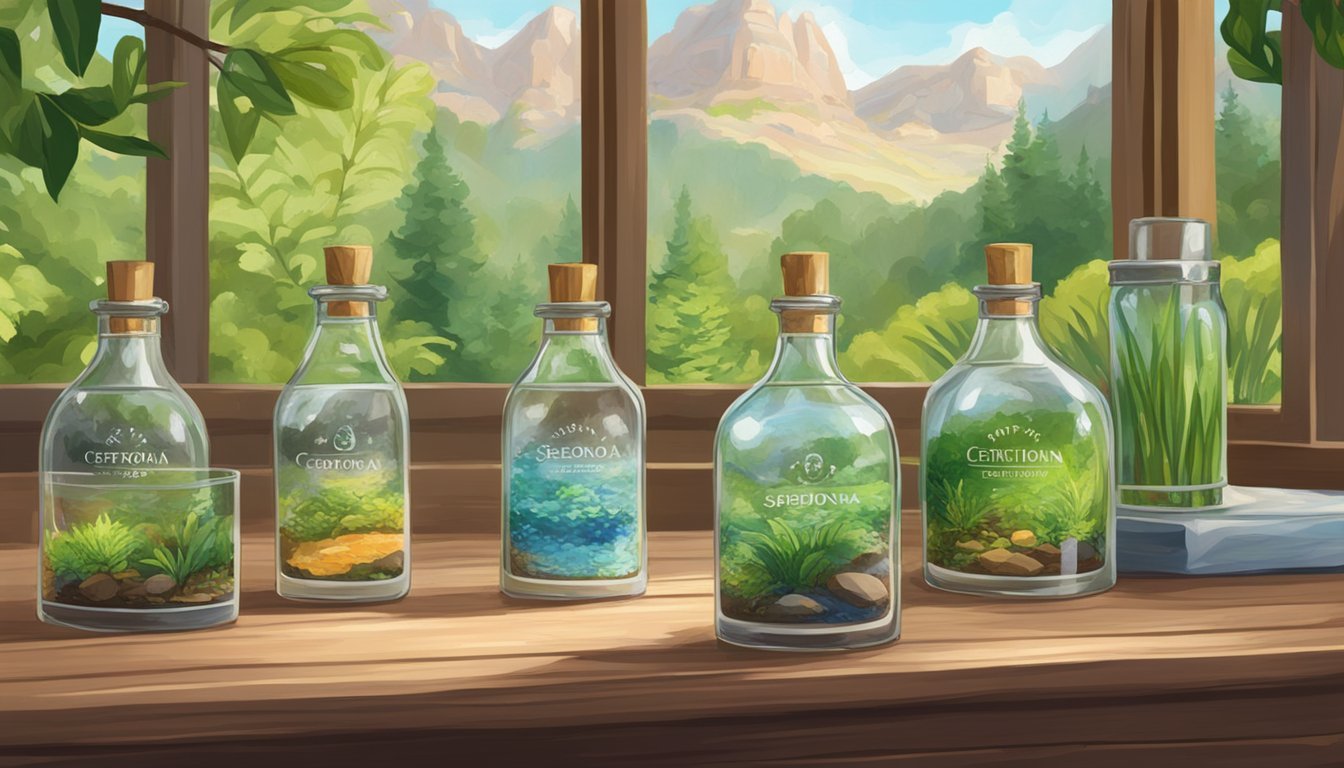Purely Sedona vs. Ophora
A Comparative Analysis of Bottled Water Quality
For bottled water enthusiasts seeking premium quality, the choice between Purely Sedona and Ophora can be challenging. Purely Sedona, sourced from the natural springs of Sedona, is celebrated for its crisp, clean taste and rich mineral content. On the other hand, Ophora offers ultra-purified water with high oxygen content, making it a favorite among consumers focused on health and wellness benefits.
Each brand brings unique qualities to the table. Purely Sedona distinguishes itself by its refreshing flavor and natural sourcing, while Ophora impresses with its advanced purification technologies and enhanced oxygenation. These differences can significantly influence the preferences of discerning bottled water drinkers.
Understanding what sets these two apart is key. Whether consumers prioritize natural mineral content and source purity or seek the added benefits of high oxygen levels, there is a compelling case for both Purely Sedona and Ophora. The ensuing comparison will dive deeper into the specifics, helping readers determine the ideal choice for their hydration needs.
Understanding Bottled Water
Different types of bottled water, regulatory standards, and environmental impacts play crucial roles in determining the best choice for consumers. Here's an overview of what you need to know.
Types of Bottled Water
Bottled water comes in various types, each with unique characteristics. Spring water comes from natural springs and is usually filtered to remove impurities. Purified water originates from any source but undergoes processes like distillation or reverse osmosis to remove contaminants. Mineral water contains naturally occurring minerals and must meet certain mineral content standards. Sparkling water is infused with carbon dioxide gas, creating bubbles. Alkaline water boasts a higher pH level and is believed to neutralize acid in the body. Artesian water is sourced from confined aquifers, offering purity from deep underground.
Bottled Water Regulation
Bottled water regulation ensures safety and quality for consumers. In the United States, the FDA sets standards for bottled water, mirroring EPA regulations for tap water. Labeling is crucial, providing details about the source and treatment methods. Regular testing for contaminants like bacteria and chemicals is mandatory. Compliance with these standards ensures bottled water is safe for consumption. Additionally, claims like "natural" or "spring" must adhere to specific definitions, maintaining transparency. This regulation protects public health and maintains trust in bottled water brands.
Environmental Considerations
Environmental impact is a significant concern with bottled water. Plastic waste from bottles contributes to pollution and landfill overflow. Recycling programs aim to mitigate this, but not all bottles are recycled. Sustainability efforts include using biodegradable materials and encouraging consumers to choose eco-friendly options. Carbon footprint from production and transportation also plays a role. Reusable bottles and water filters offer greener alternatives. Companies like Purely Sedona and Ophora often emphasize their commitment to reducing environmental impact, appealing to eco-conscious consumers. Awareness and responsible choices can help minimize bottled water's environmental footprint.
Brands in Focus
Purely Sedona and Ophora stand out in the bottled water market for different reasons. Purely Sedona emphasizes its affordability and purity, hailing from Oak Creek Canyon in Sedona. Ophora, on the other hand, is known for its advanced filtration process and high oxygen content.
Purely Sedona Overview
Purely Sedona sources its water from Oak Creek Canyon in Sedona, Arizona. This brand prides itself on offering pure, natural spring water without any additives.
Purely Sedona is also notable for its budget-friendly pricing, with bottles ranging from $1.50 to $3.00. This makes it accessible to a wide audience.
Additionally, the company focuses heavily on its local heritage, marketing itself as a community-centric choice. The water undergoes minimal processing, retaining the natural mineral content, which appeals to health-conscious consumers.
Ophora Overview
Ophora offers a more technologically advanced bottled water option. It uses a multi-stage filtration process, including reverse osmosis and UV disinfection, to ensure high purity levels.
Ophora's main selling point is its high oxygen content, which claims to enhance the water’s health benefits. This premium water is often marketed to fitness enthusiasts and those seeking wellness benefits.
Pricing for Ophora bottles is higher compared to Purely Sedona, reflecting its premium positioning. The brand focuses less on geographical origins and more on scientific advancements in water purification, making it a unique player in the bottled water market.
Water Source and Filtration Process
Understanding the origin and treatment of the water is essential when comparing Purely Sedona and Ophora. Both have unique sources and undergo specific filtration processes impacting their taste and quality.
Natural Spring Water vs. Purified Water
Purely Sedona sources its water from deep artesian wells in Sedona, Arizona. This region's volcanic rock naturally filters the water, contributing to its crisp and refreshing taste.
Ophora derives its water differently, focusing on purification. The precise source can vary, but the water is subjected to rigorous purification techniques to ensure high purity levels.
Purely Sedona contains natural minerals, enhancing its taste and potential health benefits. The mineral content comes directly from the geological features of the source.
Ophora, on the other hand, may add minerals back into the water after extensive filtration, striving to balance purity with taste.
Filtration and Purity
The filtration process for Purely Sedona is relatively simple, relying largely on natural processes. The artesian wells provide a naturally filtered product, which then undergoes further minimal treatment to ensure safety without altering its natural composition significantly.
Ophora utilizes advanced multi-stage filtration methods, including reverse osmosis, to remove contaminants thoroughly.
This process ensures that the final product is exceptionally pure, with minimal total dissolved solids (TDS). However, this also means that there are fewer natural minerals present in the finished product unless reintroduced.
Purely Sedona's approach preserves the water's natural minerals and benefits from fewer human interventions. Ophora's method, while technically sophisticated, focuses on achieving the highest possible purity, sometimes at the expense of natural mineral content.
Each brand's approach reflects its priorities: Purely Sedona favors natural filtration and mineral retention, while Ophora emphasizes maximum purity and contaminant removal.
Health and Hydration
Selecting the right bottled water can significantly impact health and hydration. Two essential factors to consider are pH levels and the mineral content of the water.
pH and Alkalinity
The pH level of water determines its acidity or alkalinity, which can influence various bodily functions. Purely Sedona offers a slightly alkaline pH, typically around 8.2. This can aid in maintaining a balanced pH level in the body, which is crucial for digestion and overall metabolic functions.
Ophora water also prides itself on an ideal alkaline pH, usually between 8.0 and 8.5. This alkalinity can help neutralize acid in the bloodstream, promoting better bone health and reducing acid reflux. Drinking alkaline water like Ophora may improve hydration levels, as it is believed to be absorbed more efficiently by the body.
Electrolytes and Mineral Content
Electrolytes, such as calcium, magnesium, potassium, and bicarbonate, play a vital role in muscle function and overall body hydration. Purely Sedona contains a balanced mix of essential minerals. This blend supports muscle function, enhances bone health, and aids in proper digestion.
Ophora water is enriched with a higher concentration of electrolytes and minerals. The higher levels of magnesium and potassium in Ophora support optimal muscle and nerve function. Additionally, the presence of bicarbonate helps maintain the body's pH balance and assists in neutralizing lactic acid build-up after exercise.
In conclusion, both Purely Sedona and Ophora offer health benefits through balanced pH levels and essential minerals. However, the slight differences in their mineral content and alkalinity levels might make one more suitable than the other based on individual health needs.
Taste Profile and Quality
This section will explore the taste characteristics and quality of Purely Sedona and Ophora, highlighting how each brand compares to other premium water brands in terms of taste and suitability for fine dining experiences.
Water Taste Comparison
Purely Sedona boasts a neutral pH level around 7.0, contributing to a clean, crisp flavor that few find off-putting. It's gentle on the stomach and ideal for daily hydration. This neutrality provides a refreshing experience similar to Icelandic Glacial and Acqua Panna, known for their smooth, palate-friendly profiles.
Ophora focuses on micro-clustered water, resulting in a silkier texture and a subtly sweet finish. Its unique filtration process enhances these qualities, making it stand out among premium brands like Evian and Fiji, which are celebrated for their mineral-rich, balanced taste. Ophora's distinct approach delivers an elegant and refreshing experience.
Premium Water and Dining Experience
In fine dining settings, water quality can enhance the overall dining experience. Purely Sedona, with its crisp and clean profile, pairs well with a variety of cuisines. Its simplicity ensures that it does not overshadow the flavors of dishes, aligning it with the understated elegance found in high-quality water like Acqua Panna.
Ophora, with its refined texture and subtle sweetness, offers a luxurious touch to gourmet meals. Its premium quality complements sophisticated dishes, enhancing the sensory experience. This characteristic is comparable to Evian, which is often preferred in upscale restaurants for its balanced and smooth taste that accentuates rather than competes with fine cuisine.
Both brands elevate the dining experience, with Purely Sedona offering a versatile, neutral palate and Ophora adding a hint of indulgent sophistication. In essence, the choice between the two depends on whether one prefers a straightforward refreshment or a more nuanced, premium touch to their meal.
Packaging and Accessibility
Packaging and accessibility play a crucial role in how consumers perceive and choose between Purely Sedona and Ophora bottled water. Both brands offer distinct advantages and challenges in these aspects, impacting their overall appeal to different market segments.
Plastic vs. Glass Bottles
Purely Sedona primarily uses plastic bottles for its products, which are lightweight and convenient for on-the-go consumption. Plastic bottles are generally more affordable and easier to transport, but their environmental impact is a concern for many health-conscious and eco-friendly consumers.
In contrast, Ophora opts for glass bottles. These are favored for their premium feel and perceived higher quality. Glass is also more environmentally friendly, as it is easier to recycle and does not leach chemicals into the water. However, glass bottles are heavier and more prone to breaking, which can be less convenient for daily use and transport.
Distribution and Availability
When it comes to distribution, Purely Sedona enjoys widespread availability. Grocery stores, convenience stores, and online marketplaces frequently stock this brand, making it easy for consumers to access. The high demand for plastic bottles helps Purely Sedona maintain a strong presence in both local and international markets.
Ophora, with its focus on high-quality and environmentally friendly packaging in glass bottles, often finds its products in specialized health stores and high-end grocery chains. This distribution strategy aligns with its premium brand image, though it may limit accessibility for the average consumer who prioritizes convenience. Online platforms also serve as a key distribution channel for Ophora, catering to consumers willing to pay a premium for higher quality and sustainable options.
Cost Comparison
Purely Sedona and Ophora offer distinct price points, catering to different budgets and preferences. While both brands aim for premium quality, their cost differences can significantly influence purchasing decisions.
Price Points and Value
Purely Sedona is positioned as a more budget-friendly premium water. Prices per bottle range from $1.50 to $3.00, making it accessible without sacrificing quality.
Ophora, in contrast, tends to be on the pricier side. A single bottle can cost upwards of $5.00, appealing to those who prioritize high-end options.
While Purely Sedona emphasizes affordability and eco-friendly packaging, Ophora focuses on luxury and advanced filtration. This distinction in cost reflects their targeted market segments and value propositions.
Consumer Perception and Brand Loyalty
Consumer perception and brand loyalty are critical factors influencing the bottled water market. These elements determine purchasing decisions and long-term engagement with a brand.
Market Presence and Reputation
Purely Sedona has developed a reputation for offering pure, locally sourced water. This regional focus attracts consumers who prioritize purity and local heritage. Their branding emphasizes this connection, fostering loyalty among a niche audience.
In contrast, Ophora markets itself as a luxury brand known for its high-quality, oxygen-enriched water. This upscale positioning appeals to health-conscious and affluent buyers.
Both brands maintain strong consumer demand due to their distinct market positions. Purely Sedona's affordability and local heritage drive repeat purchases, while Ophora's premium image and product benefits secure its place among high-end consumers.
Safety and Certification
When choosing between Purely Sedona and Ophora, it's essential to consider their safety standards and certifications. This helps ensure that you are opting for a product that meets stringent quality controls and is free from harmful contaminants. Both brands prioritize maintaining high safety protocols, adhering to regulatory guidelines, and undergoing rigorous testing.
Standards and Quality Control
Purely Sedona boasts certifications from various health and safety regulatory bodies. The company works under strict EPA guidelines and conducts regular testing for contaminants like lead and harmful chemicals. Their water is regularly monitored for pH levels to maintain optimal hydration qualities.
Ophora also adheres to stringent safety standards. They are frequently tested for chemical contaminants and maintain a high pH level for better hydration. The brand is certified by leading industry safety certifications, ensuring that their water is safe for consumption. Regular quality checks are integral to their manufacturing process.









